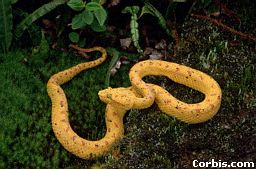|  |
|  |
In Snakes: The Evolution of Mystery in Nature herpetologist Harry Greene has sought to provide a fairly comprehensive look at the biology of families of snakes around the world. This aim, I think, is a particularly necessary one, given the ambiguous reputation "enjoyed" by snakes, and the heaps and heaps of misinformation that abounds about them. As someone who lives in an area of world not too heavily populated with snakes, the reading of this book was a particularly interesting undertaking for me.
The first section of Snakes deals with the lifestyles of snakes: how they hunt, defend themselves, reproduce, and even move (if you thought that "slithering" pretty much summed it up, you'll be surprised; Greene details four primary types of locomotion among snakes, as well as a handful of situation-specific ones!). There is a particular emphasis on the evolution of the various traits of snakes; indeed, as the title implies, the entire book has an evolutionary focus. As is the case throughout the book, this section is dotted with brief "special topics" dealing with such subjects as other snake-shaped vertebrates and the defensive tools of cobras.
After discussing snakes and their habits as a group, Greene moves on to talking about the different families of snakes, from the blindsnakes to the colubrids to the vipers. This section of the book really brings home how many different types of snakes there are out there, as well as how difficult and convoluted the taxonomy of snakes has become since serious study of them began. The special topics in this section deal primarily with the taxonomic problems and with the physical aspects of global dispersion of snakes, but also include an interesting section on mimicry of venomous snakes by non-venomous species.
Lastly, Greene sums up the details of snake evolution, and devotes a brief section to discussing the conservation and preservation of snake species. This last bit is, of course, on the depressing side (snakes are no more invulnerable to destruction of habitat and other environmental damage than most other species), but Green does end off with a hopeful note. There are only two special topics in this section, and they are respectively a look at fossil evidence of snakes and a case study of efforts at conserving the Massasauga Rattlesnake.
In the introduction to Snakes, Greene mentions that the book is written to be read from cover to cover, and for the most part this has been done effectively. Certainly this is NOT a basic "field guide" to snakes. Although I did find myself occasionally getting lost in the terminology, particularly in the sections about snake evolution (a helpful tip: read the appendix first!), Snakes is fairly clearly and concisely written, and the ideas put forth are easy to grasp even for a non-herpetologist. Essentially, by the end of the book I knew, and more importantly understood, much much more about snakes than I had going in. In addition, the photography in the book (mostly by Michael and Patricia Fogden, who also took the picture at the top of this page, but with contributions from a few others) is stunning. I confess that it was the gorgeous cover photograph of a Sumatran Tree Pitviper that first attracted me to this book. I'm sure that it would be nearly impossible to read this book and see these pictures without being moved by the beauty of snakes and inspired to learn more about them, and on those grounds I highly recommend Snakes: The Evolution of Mystery in Nature.
Reviewed by Patrick Conway on Monday, March 19, 2001. Photograph from the Yahoo! Picture Gallery.